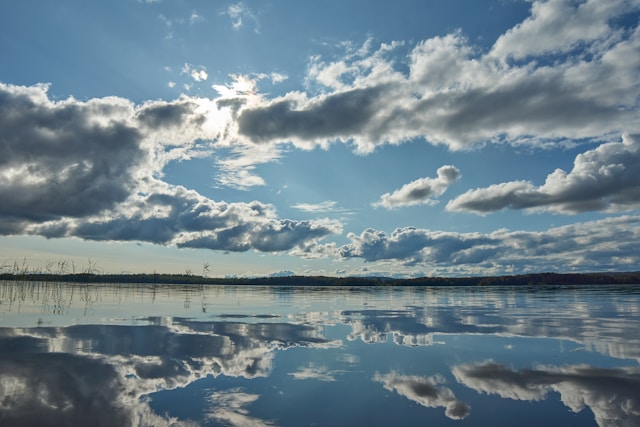Landslides are one of nature’s most powerful and destructive geological events. With their sudden and overwhelming force, landslides can reshape landscapes, disrupt ecosystems, and pose significant threats to human settlements.
Understanding the causes, types, and impacts of landslides is crucial for mitigating their destructive consequences and ensuring the safety of vulnerable areas. In this article, we delve into the fascinating world of landslides, examining their underlying processes, historical events, and the invaluable scientific knowledge surrounding them.
The Unpredictable Forces at Play
Landslides are fascinating geological phenomena that occur when the stability of a slope is compromised, leading to the downhill movement of rock, soil, or debris. They are governed by various scientific principles and factors that contribute to their occurrence.
Here are some additional scientific facts about landslides:
- Shear Strength and Slope Stability: Landslides occur when the shear strength of the materials comprising a slope is overcome by the forces of gravity. Shear strength refers to the ability of a material to resist internal forces that cause deformation or failure. When the shear strength is exceeded, the slope becomes unstable, initiating a landslide;
- Soil Liquefaction: In some cases, landslides can be triggered by a phenomenon known as soil liquefaction. This occurs when saturated loose or partially saturated granular soils temporarily lose their strength and behave like a fluid. Earthquakes or rapid changes in stress conditions can induce liquefaction, leading to landslides;
- Earthquake-Induced Landslides: Earthquakes can trigger landslides due to the sudden ground shaking they generate. The vibrations disturb the equilibrium of the slopes, reducing the frictional forces that hold them in place. In regions with high seismic activity, such as tectonic plate boundaries, earthquake-induced landslides are common and can have devastating consequences;
- Slope Angle and Stability: The angle of a slope, known as the slope gradient, plays a significant role in landslide occurrence. Steep slopes are inherently more unstable than gentle slopes because the gravitational forces acting on the materials are stronger. As the slope angle increases, the shear stress acting on the materials also increases, making them more susceptible to failure;
- Groundwater and Landslide Triggers: Groundwater plays a crucial role in landslides. Excess water infiltrating the soil can increase pore water pressure, reducing the effective stress and weakening the slope’s stability. Heavy rainfall or rapid snowmelt can raise groundwater levels, acting as a trigger for landslides, particularly in areas with high precipitation.
Key Facts about Landslides
| Fact | Description |
|---|---|
| Gravity’s Dominance | Landslides are primarily driven by gravity, which causes the downward movement of rock and debris. |
| Geological Factors | Geological composition, slope steepness, and rock strength are key factors influencing landslide occurrence. |
| Triggering Events | Heavy rainfall, earthquakes, volcanic eruptions, and human activities can trigger landslides. |
| Types of Landslides | Landslides can be categorized into various types, including rockfalls, debris flows, mudslides, rotational slides, and translational slides. |
| Shear Strength and Slope Stability | Landslides occur when the shear strength of a slope’s materials is overcome by gravity. |
| Soil Liquefaction | Saturated loose or partially saturated granular soils can experience temporary loss of strength, behaving like a fluid, leading to landslides. |
| Earthquake-Induced Landslides | Earthquakes can trigger landslides by disturbing the equilibrium of slopes through ground shaking. |
| Slope Angle and Stability | Steep slopes are more prone to landslides due to stronger gravitational forces and increased shear stress. |
| Groundwater and Landslide Triggers | Excess groundwater can weaken slope stability, making the area more susceptible to landslides. |
Unleashing Devastation
The sheer power and destructive force of landslides cannot be underestimated. When these geological events occur, they leave behind a trail of devastation that affects both natural landscapes and human settlements.
Take a closer look at the significant damage caused by landslides:
- Loss of Life and Infrastructure: One of the most tragic consequences of landslides is the loss of human life. Rapidly moving masses of rock, soil, and debris can engulf buildings, roads, and entire communities in an instant. The toll on human life can be staggering, leading to severe casualties and leaving families and communities shattered by the loss;
- Displacement and Disruption: Landslides not only cause immediate destruction but also lead to long-term disruptions. During a landslide, soil, rocks, and debris are displaced, creating blockages in rivers and streams. This obstruction can result in dam formations and subsequent flooding, impacting both local ecosystems and communities downstream. The displacement of large volumes of material alters natural drainage patterns, which can have long-lasting effects on the surrounding environment;
- Environmental Impact: Landslides have a profound impact on the environment. When a landslide occurs, it strips away vegetation, leaving the affected area barren. The removal of vegetation increases the risk of soil erosion, as there are no longer roots to hold the soil in place. This erosion can lead to further degradation of the landscape, loss of fertile soil, and disruption of ecosystems;
- Economic Consequences: The aftermath of a landslide can be financially devastating for affected regions. Rebuilding damaged infrastructure, restoring ecosystems, and providing relief and support to affected communities require substantial resources. The economic impact extends beyond the immediate aftermath, as communities struggle to recover and regain stability in the wake of such a catastrophic event.

Noteworthy Landslide Events
Throughout history, numerous severe landslides have occurred in various parts of the world, leaving indelible marks on the affected regions.
Check some notable examples below:
- Vaiont Dam, Italy (1963): In northern Italy, the Vaiont Dam landslide occurred in the Vajont Valley. It resulted in a massive landslide-induced tsunami, triggered by the collapse of a mountainside into the reservoir behind the dam. The tsunami surged over the dam, causing significant damage and claiming the lives of approximately 2,000 people;
- Armero Tragedy, Colombia (1985): The Armero Tragedy was a devastating landslide triggered by the eruption of the Nevado del Ruiz volcano. The resulting lahars (volcanic mudflows) buried the town of Armero under meters of mud and debris, resulting in the loss of around 23,000 lives;
- Sierra Leone (2017): In Freetown, the capital city of Sierra Leone, torrential rains triggered a massive landslide that swept through the Regent area. The disaster resulted in the loss of over 1,000 lives and caused widespread destruction, displacing thousands of people;
- Sidoarjo Mud Flow, Indonesia (2006-present): The Sidoarjo mud flow, often referred to as the “Lusi mud volcano,” began as a result of drilling activities for natural gas exploration. The mudflow has been ongoing for more than a decade, displacing thousands of people and covering villages, factories, and infrastructure with thick mud;
- Yungay, Peru (1970): The town of Yungay was devastated by a massive avalanche triggered by an earthquake in the Ancash region of Peru. The landslide buried the entire town, resulting in the loss of approximately 25,000 lives.
These notable events serve as reminders of the destructive power that lies within our planet’s natural forces. Analyzing historical events associated with landslides is vital for developing effective strategies to mitigate their impact and protect vulnerable areas.

Conclusion
Landslides are a powerful reminder of nature’s ability to shape our world. With their unpredictable forces and devastating consequences, understanding and managing these natural phenomena are vital for ensuring the safety and well-being of communities in at-risk areas.
By studying the causes, types, and historical events associated with landslides, scientists and policymakers can work together to develop effective mitigation strategies, safeguard vulnerable regions, and minimize the impact of these natural disasters.


